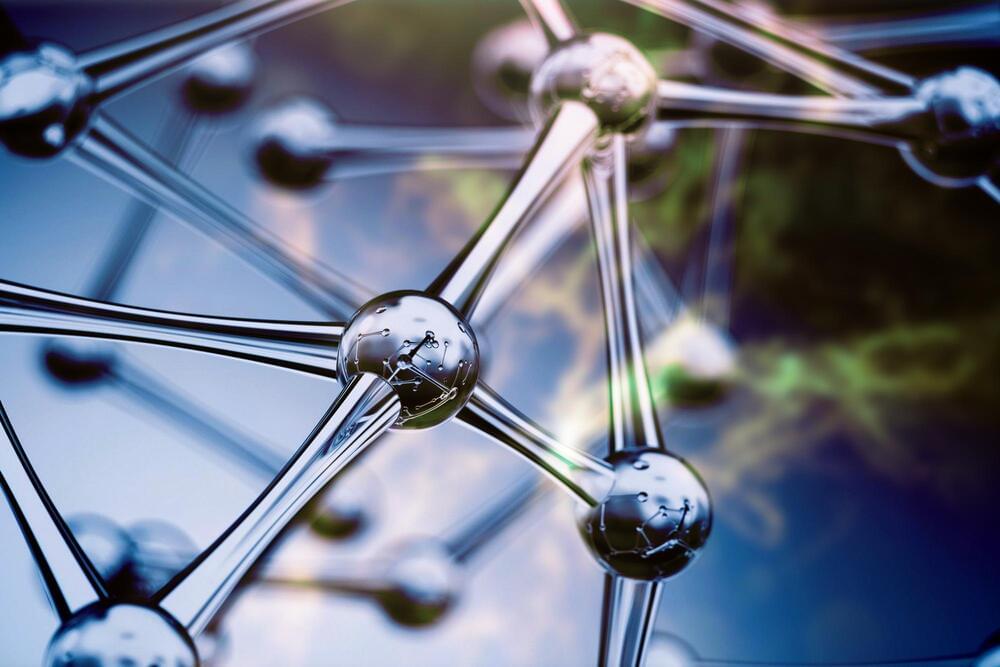The almost unnoticed hack of MiMi points to a growing trend of software supply chain attacks, including by the Chinese government.



Iran’s recent seizure of unmanned US Navy boats shined a light on a pioneering Pentagon program to develop networks of air, surface and underwater drones for patrolling large regions, meshing their surveillance with artificial intelligence.
The year-old program operates numerous unmanned surface vessels, or USVs, in the waters around the Arabian peninsula, gathering data and images to be beamed back to collection centers in the Gulf.
The program operated without incident until Iranian forces tried to grab three seven-meter Saildrone Explorer USVs in two incidents, on August 29–30 and September 1.




O.o!!!
According to recent research, the protein CHIP can control the insulin receptor more effectively while acting alone than when in a paired state. In cellular stress situations, CHIP often appears as a homodimer – an association of two identical proteins – and mainly functions to destroy misfolded and defective proteins. CHIP thus cleanses the cell. In order to do this, CHIP works with helper proteins to bind a chain of the small protein ubiquitin to misfolded proteins.
As a result, the cell detects and gets rid of defective proteins. Furthermore, CHIP controls insulin receptor signal transduction. CHIP binds to the receptor and degrades it, preventing the activation of life-extending gene products.
Researchers from the University of Cologne have now shown via tests using human cells and the nematode Caenorhabditis elegans that CHIP can also label itself with ubiquitin, preventing the formation of its dimer. The CHIP monomer regulates insulin signaling more effectively than the CHIP dimer. The research was conducted by the University of Cologne’s Cluster of Excellence for Cellular Stress Responses in Aging-Associated Diseases (CECAD) and was recently published in the journal Molecular Cell.

A set of six high-severity firmware vulnerabilities impacting a broad range of HP devices used in enterprise environments are still waiting to be patched, although some of them were publicly disclosed since July 2021.
Firmware flaws are particularly dangerous because they can lead to malware infections that persist even between OS re-installations or allow long-term compromises that would not trigger standard security tools.
As Binarly highlights in the report, even though it’s been a month since they made some of the flaws public at Black Hat 2022, the vendor hasn’t released security updates for all impacted models, leaving many customers exposed to attacks.

A growing number of ransomware groups are adopting a new tactic that helps them encrypt their victims’ systems faster while reducing the chances of being detected and stopped.
This tactic is called intermittent encryption, and it consists of encrypting only parts of the targeted files’ content, which would still render the data unrecoverable without using a valid decryptor+key.
For example, by skipping every other 16 bytes of a file, the encryption process takes almost half of the time required for full encryption but still locks the contents for good.
Are you looking for the most recent Artificial Intelligence Trends? Artificial intelligence will have advanced far enough to become the most revolutionary technology ever devised by man. Artificial intelligence (AI) is progressing at an alarming rate. At the moment, new technical applications and systems are being employed to imitate, extend, and expand human intelligence.
Curious to know more? stay connected for that as we dive deeper!
🔔 Subscribe now with all notifications on for more information about the Technologies of the Future humanity has to offer.
#Robot #ai #artificialintelligence #ainews #futuretech #futurity #robotics #humanbrain.
About AI Innovation!
🎥 Videos about Artificial Intelligence, Robots, Longevity, Virtual reality and more Technologies of the Future.
✏️Written, voiced and produced by AI Innovation.
🔔 Subscribe now for more news about the Technologies of the Future humanity has to offer.
💼 Business Inquiries and Contact.

It’s difficult to describe the state of the universe’s affairs back when the whole of everything was compressed to a size slightly smaller than the period at the end of this sentence — on account that the concepts of time and space literally didn’t yet apply. But that challenge hasn’t stopped pioneering theoretical astrophysicist, Dr. Laura Mersini-Houghton, from seeking knowledge at the edge of the known universe and beyond. In her new book, Before the Big Bang, Mersini-Houghton recounts her early life in communist Albania, her career as she rose to prominence in the male-dominated field of astrophysics and discusses her research into the multiverse which could fundamentally rewrite our understanding of reality.
Excerpted from Before The Big Bang: The Origin of the Universe and What Lies Beyond by Laura Mersini-Houghton. Published by Mariner Books. Copyright © 2022 by Laura Mersini-Houghton. All rights reserved.
Scientific investigations of problems like the creation of the universe, which we can neither observe nor reproduce and test in a lab, are similar to detective work in that they rely on intuition as well as evidence. Like a detective, as pieces of the puzzle start falling into place, researchers can intuitively sense the answer is close. This was the feeling I had as Rich and I tried to figure out how we could test our theory about the multiverse. Rationally, it seemed like a long shot, but intuitively, it seemed achievable.